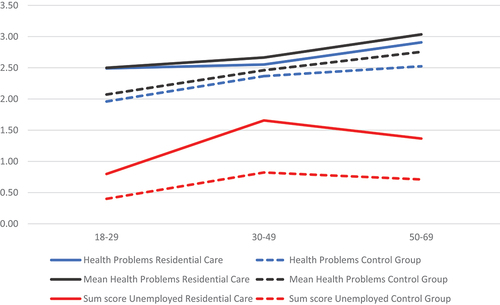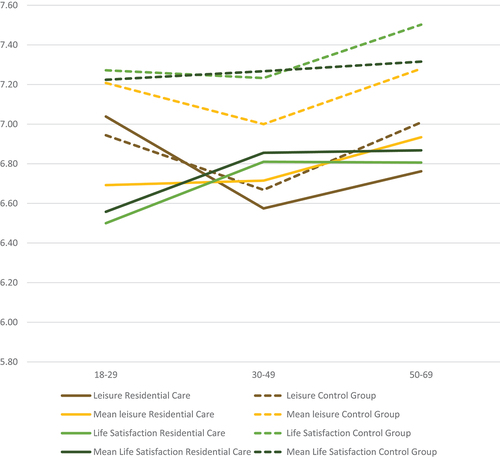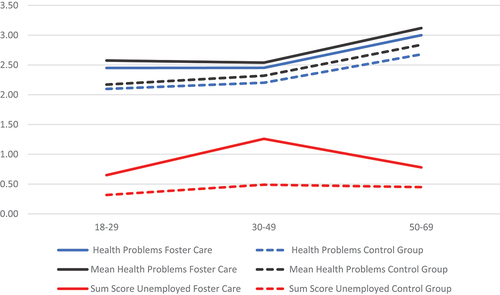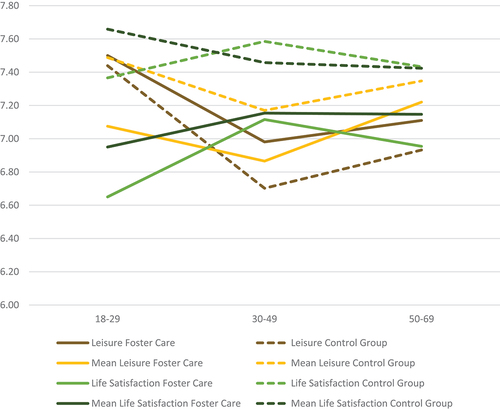Figures & data
Table 1. Missing values for variables considered in propensity score matching and for dependent variables.
Table 2. Propensity score matching results for residential care.
Table 3. Propensity score matching results for foster parents.
Table 4. Differences between adults who experienced residential care, as children and control group, ages 19 to 69.
Table 5. Differences between adults who experienced residential care, as children and control group, ages 19 to 29.
Table 6. Differences between adults who experienced residential care, as children and control group, ages 30 to 49.
Table 7. Differences between adults who experienced residential care, as children and control group, ages 50 to 69.
Figure 1. Mean differences between adults who experienced residential care, as children and control group over their lifetime (health and unemployment).

Figure 2. Mean differences between residential care leavers and control group over their lifetime (leisure and life satisfaction).

Table 8. Differences between adults who experienced foster care, as children and control group, ages 19 to 69.
Table 9. Differences between adults who experienced foster care, as children and control group, ages 19 to 29.
Table 10. Differences between adults who experienced foster care, as children and control group, ages 30 to 49.
Table 11. Differences between adults who experienced foster care, as children and control group, ages 50 to 69.


